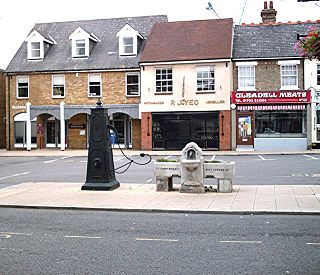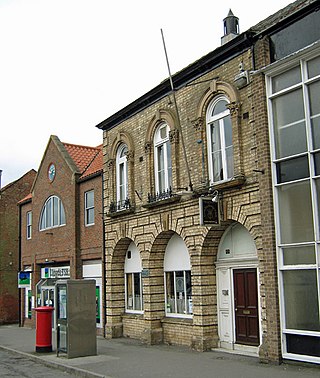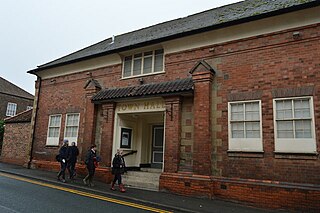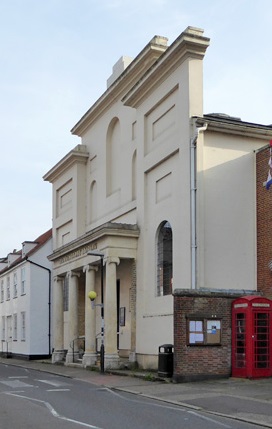
Shoeburyness, or simply Shoebury, is a suburb of the city of Southend-on-Sea, in the ceremonial county of Essex, England. 3 miles (5 km) east of the city centre. Shoebury was originally named by the Saxons, before becoming two distinctively separate parishes of South Shoebury and North Shoebury some time after 1086. South Shoebury civil parish became Shoeburyness Urban District Council from 1894 until 1933, when it became part of the county borough of Southend-on-Sea, which also incorporated the western part of the dissolved North Shoebury civil parish, and the area became named after the Ness. It is now in the unparished area of Southend-on-Sea, in the Southend-on-Sea unitary authority district. It was once a Garrison town and still acts as host to MoD Shoeburyness.

Rochford is a town and civil parish in the Rochford District in Essex, England, 3 miles (4.8 km) north of Southend-on-Sea, 43 miles (69 km) from London and 21 miles (34 km) from Chelmsford. At the 2011 census, the civil parish had a population of 8,471.

The Corn Exchange is an events and concert venue located on Wheeler Street in Cambridge, Cambridgeshire, England. The structure, which was commissioned as a corn exchange, is a Grade II listed building.

Southend-on-Sea was a local government district from 1866 to 1974 around the seaside resort of Southend-on-Sea in Essex, England. Its origin was a local board formed for the parish of St John the Baptist, which had been split off from Prittlewell for ecclesiastical purposes in 1842. It was incorporated as a municipal borough in 1892. In 1889, when Essex County Council was formed, Southend-on-Sea was within the administrative county of Essex. However, through expansion in area and population by 1914 it was split off from the administrative county as a county borough. The local authority was Southend Local Board from 1886 and Southend Corporation from 1892. The corporation changed the name of the town from Southend to Southend-on-Sea in 1893. In 1974 the county borough was reconstituted as a non-metropolitan district with the same boundaries and some powers were transferred to Essex County Council.

The Corn Exchange is an events and concert venue located on St Paul's Square in the Castle area of Bedford, Bedfordshire, England. The structure, which was commissioned as a corn exchange, is a Grade II listed building.

Corn exchanges are distinct buildings which were originally created as a venue for corn merchants to meet and arrange pricing with farmers for the sale of wheat, barley, and other corn crops. The word "corn" in British English denotes all cereal grains, such as wheat and barley. With the repeal of the Corn Laws in 1846, a large number of corn exchanges were built in England, particularly in the corn-growing areas of Eastern England.

The Corn Exchange is a commercial building in the Market Place in Saffron Walden, Essex, England. The structure, which is currently used as a library, is a Grade II listed building.

The Albert Hall is a commercial building in the High Street, Colchester, Essex, England. The structure, which was commissioned as a corn exchange and is now used as a bank, is a Grade II listed building.

The Market House is a commercial building in Church Street in Camborne, Cornwall, England. The structure, which is currently used as a hotel and public house, is a Grade II listed building.

The Corn Exchange is a commercial building in Queen Street, Market Rasen, Lincolnshire, England. The structure, which is used as the offices of a firm of charted surveyors, is a Grade II listed building.

The Corn Exchange is a commercial building in Castle Gate, Newark-on-Trent, Nottinghamshire, England. The structure, which is currently used as a nightclub, is a Grade II listed building.

The Alexandra Theatre is an entertainment complex in Market Street, Newton Abbot, Devon, England. The structure, which was commissioned as a corn exchange and is currently used as a cinema, is a Grade II listed building.

The Corn Exchange is a commercial building in Angel Street, Worcester, Worcestershire, England. The structure, which is currently vacant, is a Grade II listed building.

The Corn Hall is a commercial building in the Market Place, Swaffham, Norfolk, England. The structure, which is used as offices and as a coffee house, is a Grade II listed building.

The Corn Exchange is a commercial building in the Market Place, Kettering, Northamptonshire, England. The structure, which was used as a cinema for much of the 20th century, currently accommodates a restaurant.

The Corn Exchange is a commercial building in Sandgate, Berwick-upon-Tweed, Northumberland, England. The structure, which is now used as an apartment block, is a Grade II listed building.

The Corn Exchange is a commercial building in the Market Place in Barton-upon-Humber, Lincolnshire, England. The structure, which is now used as a private members club, is a Grade II listed building.

Driffield Town Hall is a former municipal building in Exchange Street, Driffield, East Riding of Yorkshire, England. The structure is now used as an annex to a local hotel.

The Corn Exchange is a commercial building in the High Street in Manningtree, Essex, England. The structure, which is now used as a public library, is a Grade II listed building.

The Corn Exchange is a commercial building in the High Street in Ross-on-Wye, Herefordshire, England. The structure, which is now used as a bookshop and as the offices of Ross-on-Wye Town Council, is a Grade II listed building.





















